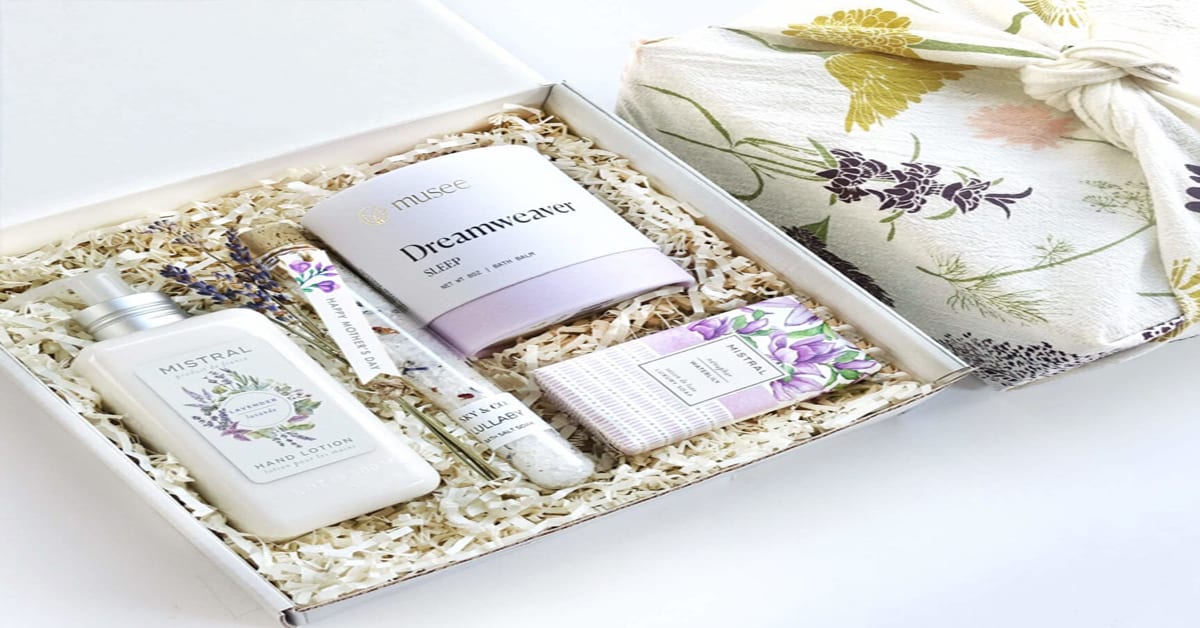When it comes to going zero waste, sustainable packaging is essential.

Depending on your lifestyle, you probably shop regularly. Loading your refrigerator and cupboard with food, personal hygiene kits, and other supplies that you need at home are just some of the reason why you shop. Of course, these supplies are wrapped up with packaging. And when you start going zero waste, packaging is one of the hurdles to this lifestyle. But it is doable, once you know which ones are packed sustainably.
The Zero Waste Lifestyle System presents you this comprehensive guide on sustainable packaging. Here we will discuss what is involved with sustainable packaging, why it is urgent that you switch to products with such packaging, the types of sustainable packaging available in the market, and how to check if what you bought has really sustainable packaging.
What is sustainable packaging?
As we all know, packaging is essential. There is a science, art and technology applied in packaging. Packaging can protect, preserve, and enclose the products to avoid damage and defects. Packaging also includes the labels of the products that contain information such as the weight, the production and expiration date of the products, the place of production, the ingredients, and the name of the products. Packaging is not just about enclosing and protecting the products but also of the transporting, storing, selling and commercializing the products.
During the ancient times, packaging was made out of natural materials. The packaging they used before were baskets, wooden boxes and papers. The baskets were actually made out of dried leaves, pine, willow, vines, oak, stems, and grasses. While boxes were made out of wood such as mahogany or other source of wood. These packaging actual evolved into glass and bronze as time went by.
Today, packaging is more diverse. But most of these packaging consists of plastics that are hard to recycle. Some of these are the plastic wrappers of snacks, chips, chocolates, to mention a few. Popular drinks and fast foods also use plastic containers and Styrofoam too. This does not only go for food but also with the stuff you use at home such bottled shampoo and home cleaning materials. Although not all packaging could totally harm the environment, it is vital that we products with sustainable packaging as much as possible.
According to the GWP, “Sustainable packaging includes looking at the bigger picture – effectively the entire lifecycle of your packaging – including use in the supply chain, basic function, and marketing, usefulness to consumer and what happens at the end of the packaging’s life.”
Sustainable packaging would not only eliminate the non-recycled materials brought by packaging. It also means that we utilize less of the raw materials that we extract from the environment in producing the materials needed for packaging. Sustainable packaging emphasizes to care for the environment while maximizing the present materials that we already have to be able to avoid dumping non-recyclables to landfills and emitting more carbon footprints to the atmosphere which causes ecological problems such as land and air pollution.
Sustainable packaging is about packing products in a way that has less impact to our environment than plastics and other non-sustainable materials. And since sustainable packaging is eco-friendly, it may not also harm the human health in which could lessen the negative economic impact to people, especially the poor. Sustainable packaging could also mean less work for the future generations in terms of addressing environmental problems which was the result of long non-sustainable practices of the population.
The urgency for sustainable packaging
As more and more trashes end up in the landfills and bodies of water and greenhouse gasses clog the atmosphere, the environmental crisis is getting much bigger and complex.
For instance, the impact of climate change is quite detrimental. It causes increase of heat, water shortage, melting of ice caps and tundras, extinction of insects and animals, and destroying some natural habitats. Climate change is posing danger not just to environment but also to humans. And climate change is just one of the grave results of the neglect and exploitation of unethical human practices that has done to the environment.
If climate change would not be addressed, it will claim more lives than ever before. Because the stress and diseases accompanied brought about by climate change will affect humans and other living creatures of the planet, causing so much damage to communities and livelihood of people. Another is the fact that this will not make the planet a livable planet, since the changes in the climate will also affect the production of food such as farming and water shortage as plants would not be able to produce more yield or thrive to live, whereas the scarcity of water— both potable and non- will also post great challenge to people and animals.
Another instance is the ocean pollution where fish are becoming highly contaminated with harmful chemicals such as lead which is known to be detrimental to human health. Other than harmful chemicals, there is also the presence of micro plastics which majority came from food packaging that are reaching the oceans and intervening the food chain of the marine life.
According to the Noissue, “Plastics play a huge role in the lives of consumers… It’s hardly surprising that the packaging industry is responsible for 40% of plastic pollution in the world – and a third of all household waste”. It also added that as eCommerce is expanding, it would contribute more to this issue over time since eCommerce sales were forecasted to hit $4.9 trillion by 2021, and will account for almost a fifth of all retail sales.”
Noissue.com further pointed out the following when it comes to sustainable packaging:
“Packaging is beneficial, safe & healthy for individuals / communities throughout life cycle
- The packaging meets market criteria for both performance and cost
- It is sourced, manufactured, transported, and recycled using renewable energy
- It incorporates and optimizes (where possible) the use of renewable or recycled source materials
- The packaging is manufactured using clean production technologies and best practices (e.g. ISO)
- Is made from materials that are healthy in all possible end of life scenarios
- It can be effectively recovered and utilized in biological and /or industrial closed loop cycles
- Has a physical design that optimizes materials and energy”.
In another article by naturefresh.ca also pointed out “Limiting unnecessary packaging, which refers to excess packaging materials that do not help extend a product’s shelf life or ensure product quality, is another important part of optimizing packaging design. Reductions in packaging size and material usage allow… to make more responsible decisions about the packaging products.”
Thus, shifting to sustainable packaging is actually a step to address this issue. In fact, it will not only help address the issue but it will also invite more consumers to patronize the products since more and more consumers are looking forward to products that utilize sustainable packaging.
A BBMG’s Conscious Consumer report discovered that 87% of consumers in the United States saw themselves as more likely to buy from brands committed to environmentally friendly practices.” In fact, consumers’ behavior towards product packaging is a great thing to ponder. Below are the statistics that says so much about consumers’ behavior:
- “51% of Millennials will check packaging before purchase for sustainability claims
- 70% of all consumers are likely to be influenced by environmentally friendly packaging
- 39% of consumers always / often look for environmental information on beverage packaging
- 70% of consumers have purchased an environmentally friendly product even when it cost more
- 66% of consumers have avoided a particular product and / or brand for environmental reasons”.
Sustainable packaging is not just actually helping the environment and maintaining ecological balance but also well for economic sustainability.
Types of Sustainable Packaging
Just like any other materials, there are also many different types of sustainable packaging. These types of sustainable packaging would basically depend on what purpose and usage they would be utilized for.
Here are some of the sustainable packaging that can be used for protecting products and making them presentable to the buyers.
Corrugated cardboard

With the aid of new technology, cardboard boxes can be made out of 100% recycled materials. This could lessen the extraction of new raw resources in producing new cardboard boxes since we all know the cardboard boxes are usually made out of trees as its raw materials. Moreover, if cardboard boxes are still intact, it can be reused up to 25 times before it can be worked out to be thrown or composted.
Packing papers

This can be used as a great alternative. For instance, shredded or bunched up papers can be used as cushion. They are as good as the plastic cushion that often used in packaging. They are not even difficult to find as there are establishments and offices that are ready to give off shredded papers. Aside from shredded papers, used papers are good for wrapping porcelain, ceramic or glass and it is proven good for protecting the said materials. Another is old newspapers can be turned to paper bags or wrappers using only glue to patch them altogether to come up with paper bags or wrappers. Sometimes, they can be made into paper tubes that can be used in weaving paper baskets which serve as containers. They are recyclable either for cushion or compost.
Reusable plastic containers

According to sendle.com, the Community Supported Agriculture programs (CSAs) are one type of business that did a successfully in using plastic containers, since CSAs were regionally based and had their own distribution system in place, returns were made easy for their customers. In this regard, plastic totes are actually sustainable if business has a feasible system that allow accessible return and exchange practices for plastic totes. They are great for internal use to and from distribution centers and retail locations of larger businesses. Although, plastic totes are quite expensive, if they could be used for a longer time, they could lessen the utilization of cardboard boxes and could cut cost effectively in the long run.
Mushroom packaging

Mushrooms can replace those Styrofoam that usually use in packaging. Aside from it is environmental friendly, mushrooms are can be grown and eaten. Mushrooms’ flexible characteristic makes it easy to grow into intended shapes of its producers. Mushrooms show promising development in terms of packaging since they do not require big spaces for growing them, and they are also easily decomposed unlike other materials.
Compostable mailers

This one could be sourced out from different resources such as corn husk and straws, depending on what it is made of. Compostable mailers are also good alternative for packaging because they work more sustainably than of those plastics.
Compostable packing peanuts

This one is actually created from natural materials that are compostable, which are non-toxic plant base that just works better for packaging as well for the environment because aside they compostable, they are also dissolvable in water.
Bioplastics
This is greatly used in food packaging from bags, utensils, cups and straws to a vast application for other materials. It replaces the use of regular plastics whenever it becomes the alternative. It avoids the use of polystyrene, polyethylene, and polypropylene. It is usually made from the sugars found in sugarcane, corn starch, and cassava.
Basically, sustainable packaging comes in many forms and one must choose and use certain types to maximum potential by being mindful of how they impact the environment.
How do you check if the product has sustainable packaging?
It would be great if one could practice checking the packaging of the purchased products so that one could find ways in maximizing it to its full potential and to also reduce outsourcing raw materials. One way to know if the packaging is sustainable, one must evaluate the life span or life cycle of the packaging.
This would help to provide answers to questions like: Where it came from? What are the resources used in creating it? Who would be affected of it is not recycled properly? Why should it be reused? How to maximize it? This way, one can examine the activities that accompany the packaging.
It is essential to check the packaging if it can be reused, recycled and decomposed. So that, one can note what appropriate action could be done. According to naturefresh.ca, “When the disposal options for a package support recycling or composting, it is considered a sustainable packaging solution; this is because recycling and composting are two environmentally responsible end-of-life options for waste disposal. With their popularity growing, recyclable and compostable materials are becoming more and more common to incorporate into packaging concepts”.
Another concern why packaging should be checked is that there are packaging that can be reused and recycled but cannot be decomposed. For instance, one cannot bury a plastic bottle to be decomposed like how a cardboard box could be. On the other hand, reusable packaging is quite fun since one can use it for different occasions. Also, it can be used for years and could effectively cut cost from your budget and reduce trashes that go to the landfills. One example of these packaging is a glass bottle of soda for storing liquids such as oils or soy sauce.
It was also emphasized by naturefresh.ca that compostable materials are different from biodegradable materials, it was mentioned that, “Compostable material decomposes at a rate that is comparable to other known compostable materials, and through standard testing, it is proven to leave no visible residue during the decomposition process.
“Whereas, Biodegradable material will eventually break down into smaller and smaller pieces, but the rate of biodegradation is dependent on the type of material. Also, biodegradable materials may release toxic components during the biodegradation process. Keeping this definition in mind, almost anything can be classified as ‘biodegradable’ as most materials will eventually break down – but while some materials may break down in 6 months, others may take 1000 years!”
Different types of packaging have labels that one can refer to find out if it is sustainable or not. These include necessary information not just about the packaging but also of the company and its policies. Since there are companies that allow a return and exchange system of packaging, one also need to know if the company of the purchased products has such kind of system.
Such system does not only promote sustainable practice but also offered rebates to every consumer that would wish to participate in such practice. It is not only environmental but also economical, both for the company and the consumers which is good since sustainability is holistic in benefits.
Moreover, one cannot just rely on the packaging’s label. It is also important to take into consideration that it requires further research and awareness to check if the packaging is sustainable or not. Sometimes, there are also manufacturers that do not honestly indicate of where they outsource their materials for packaging.
So, a little bit of investigation would help one to find out of what is the right thing to do to be able to address the issue on packaging. Aside from this, it would also help one to gain more ideas how to recreate the packaging into more usable products such as some do-it-yourself projects that can be more fun and stress relieving hobby, and who knows it could be a new source of income also.
These accumulated ideas would not only help in addressing environmental issue but also make one knowledgeable on the issue which is beneficial for everyone.
Lastly, the issue on packaging could be best addressed through zero waste shopping practices. In fact, zero waste shopping recognizes the necessity to avoid packaged products that are not sustainable and encourages on buying in bulk and from farmers’ market that has the farm to market system. Since zero waste shopping would allow one as much as possible to eliminate packaging by utilizing reusable materials such as using tote bags and eco-bags as alternatives for cardboard, paper and single-use packaging.
It also helps one to finally think of other alternatives for products that do not use packaging such as shampoo bars without any plastic wrappings and unwrapped produce. The increase of awareness to successfully address the issue of the environment one at a time brought about by the zero waste lifestyle is absolutely useful and helpful economically and socially. Since it can bring satisfaction to oneself knowing that he or she is becoming part of the solution.




